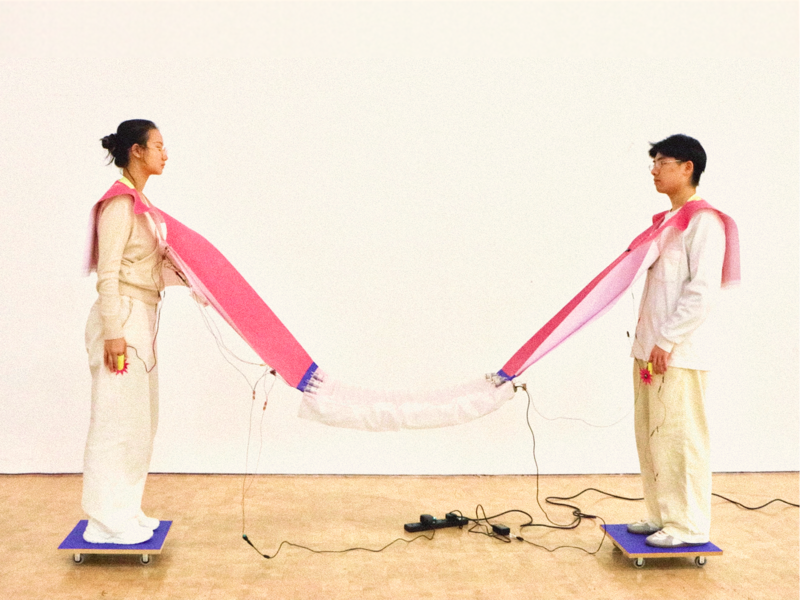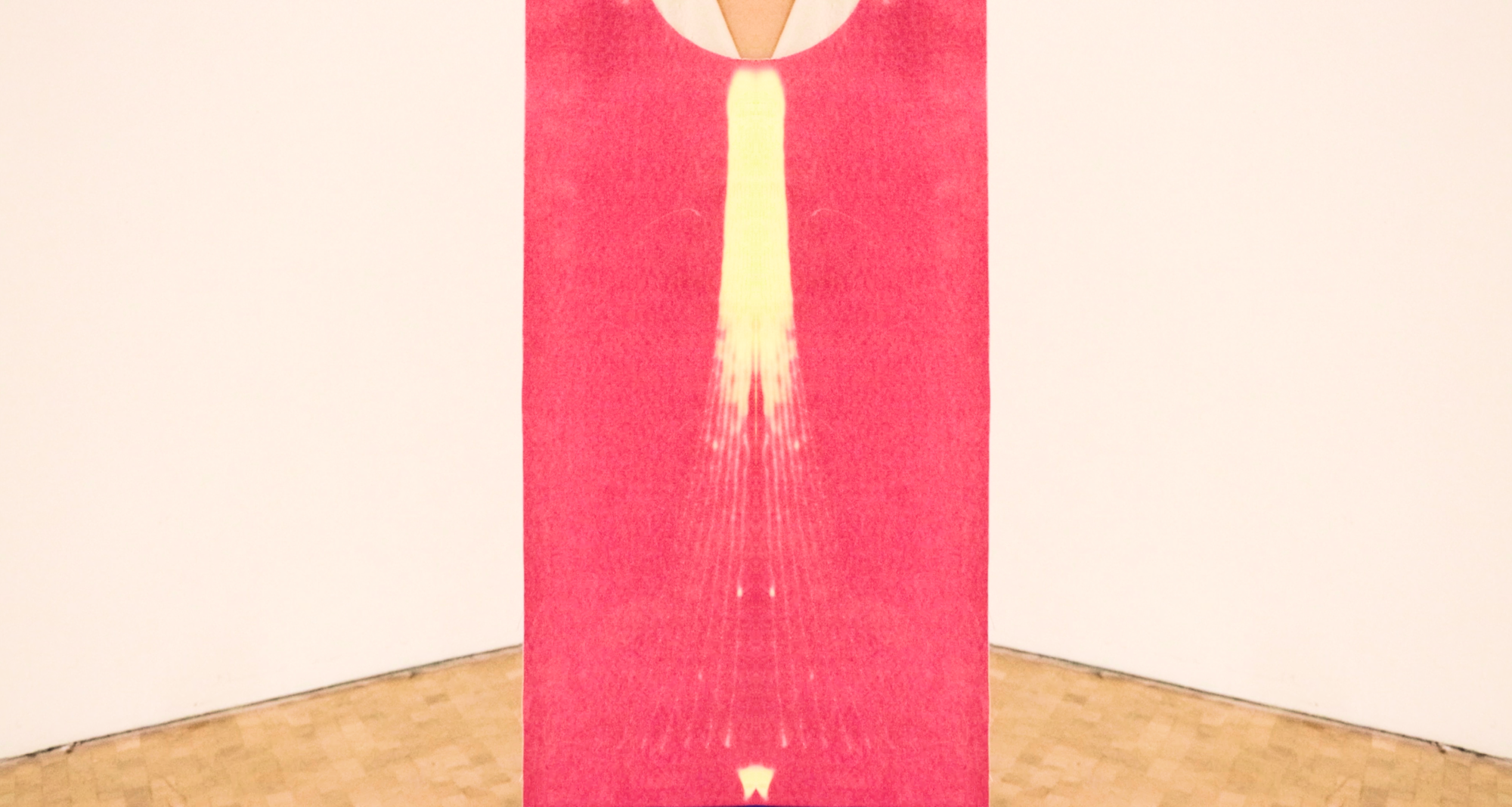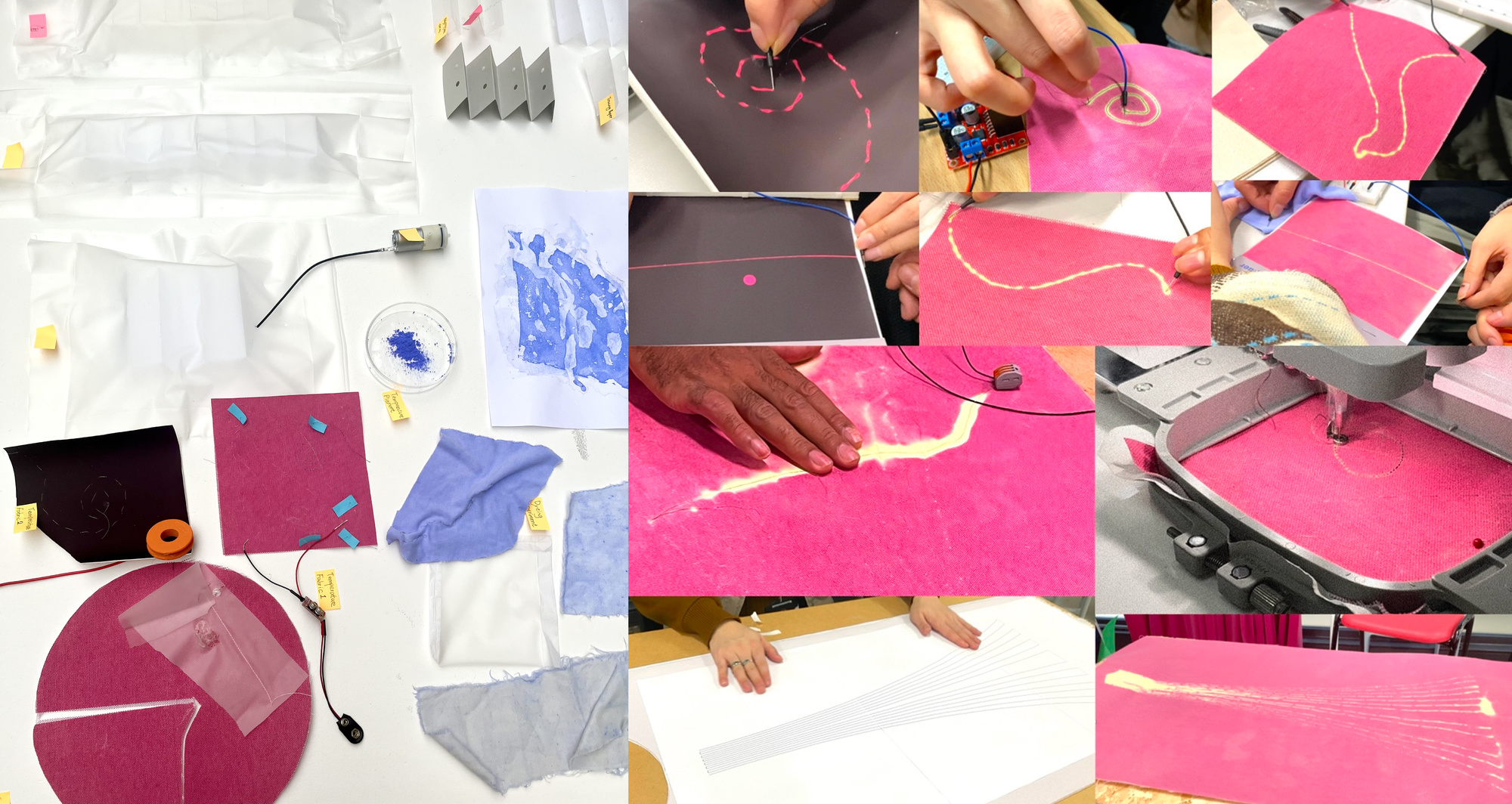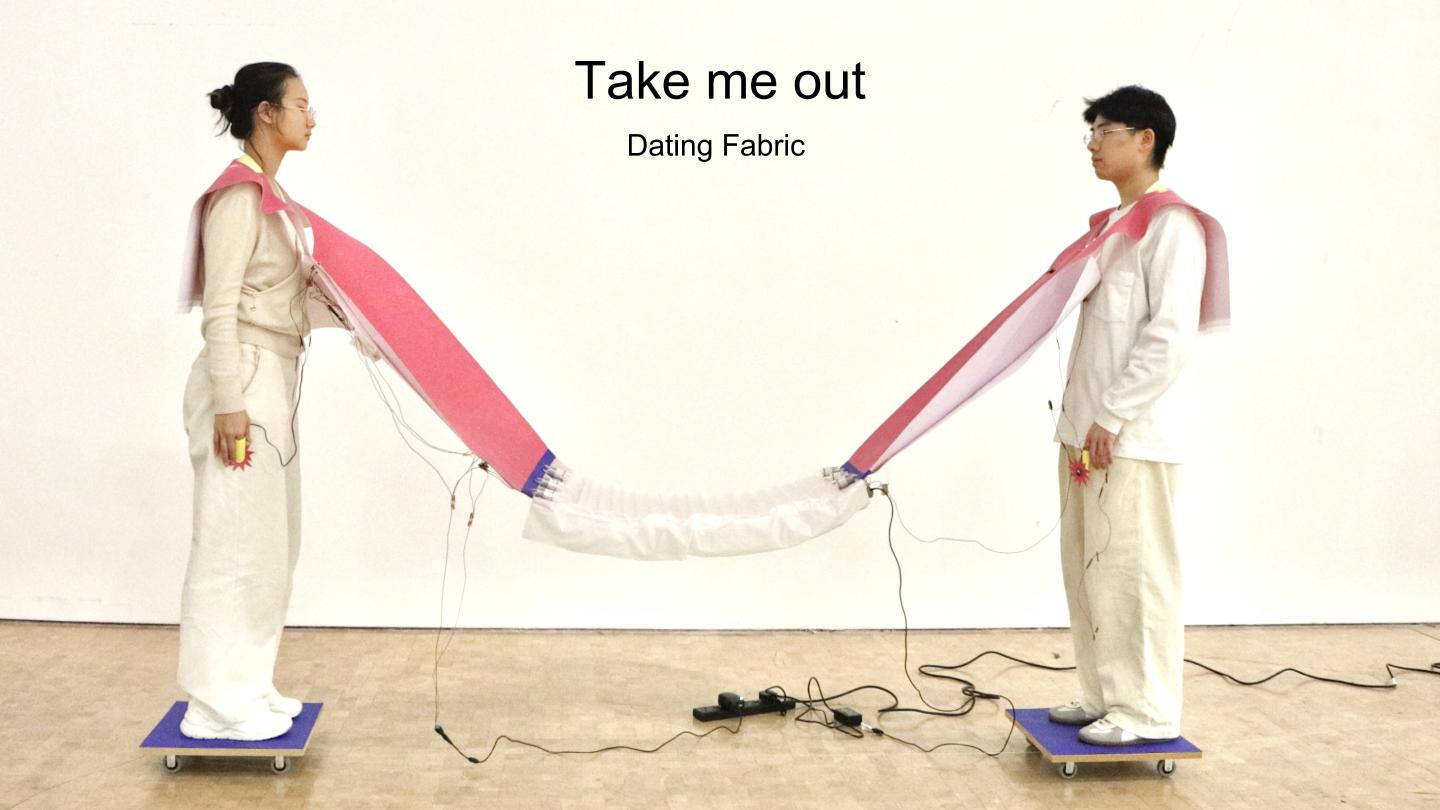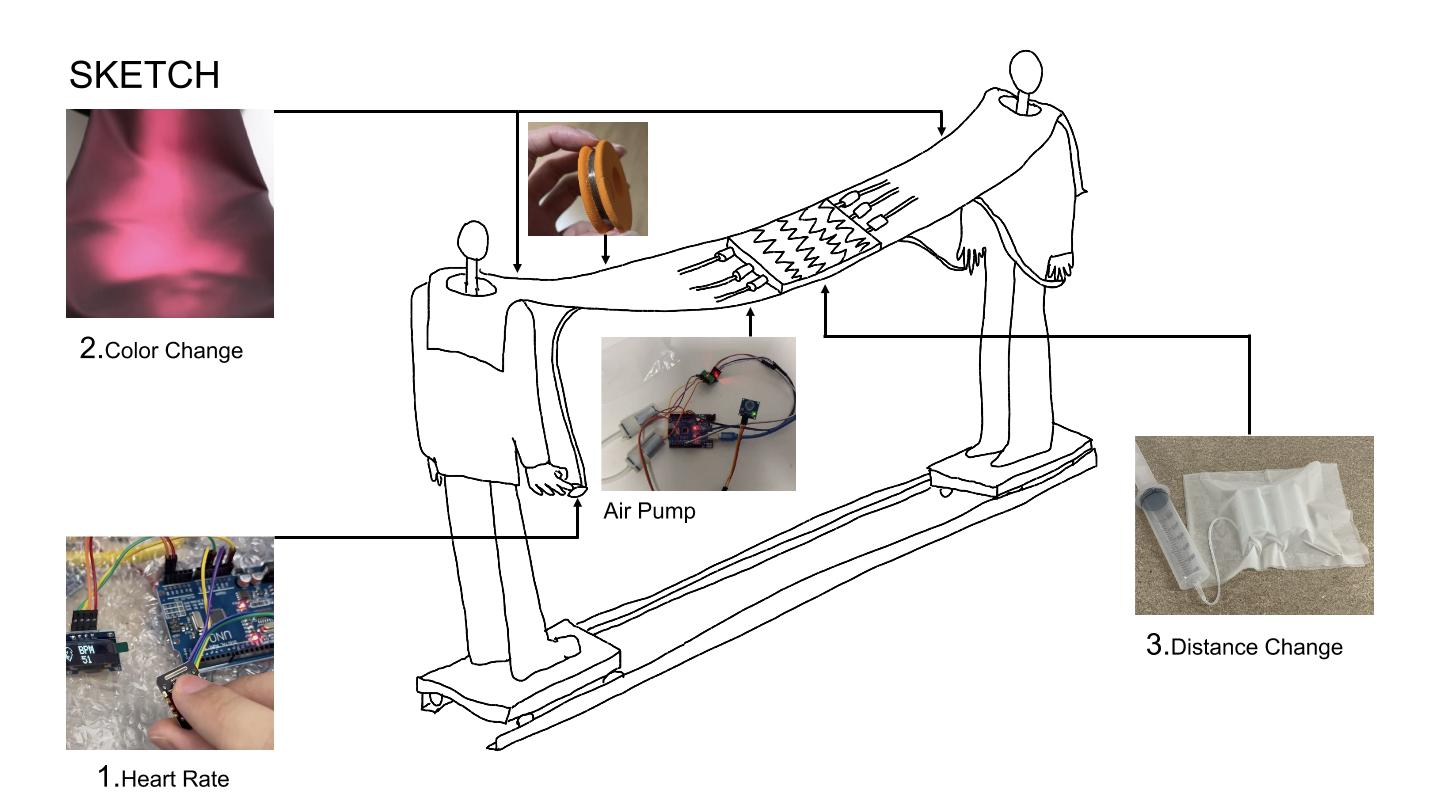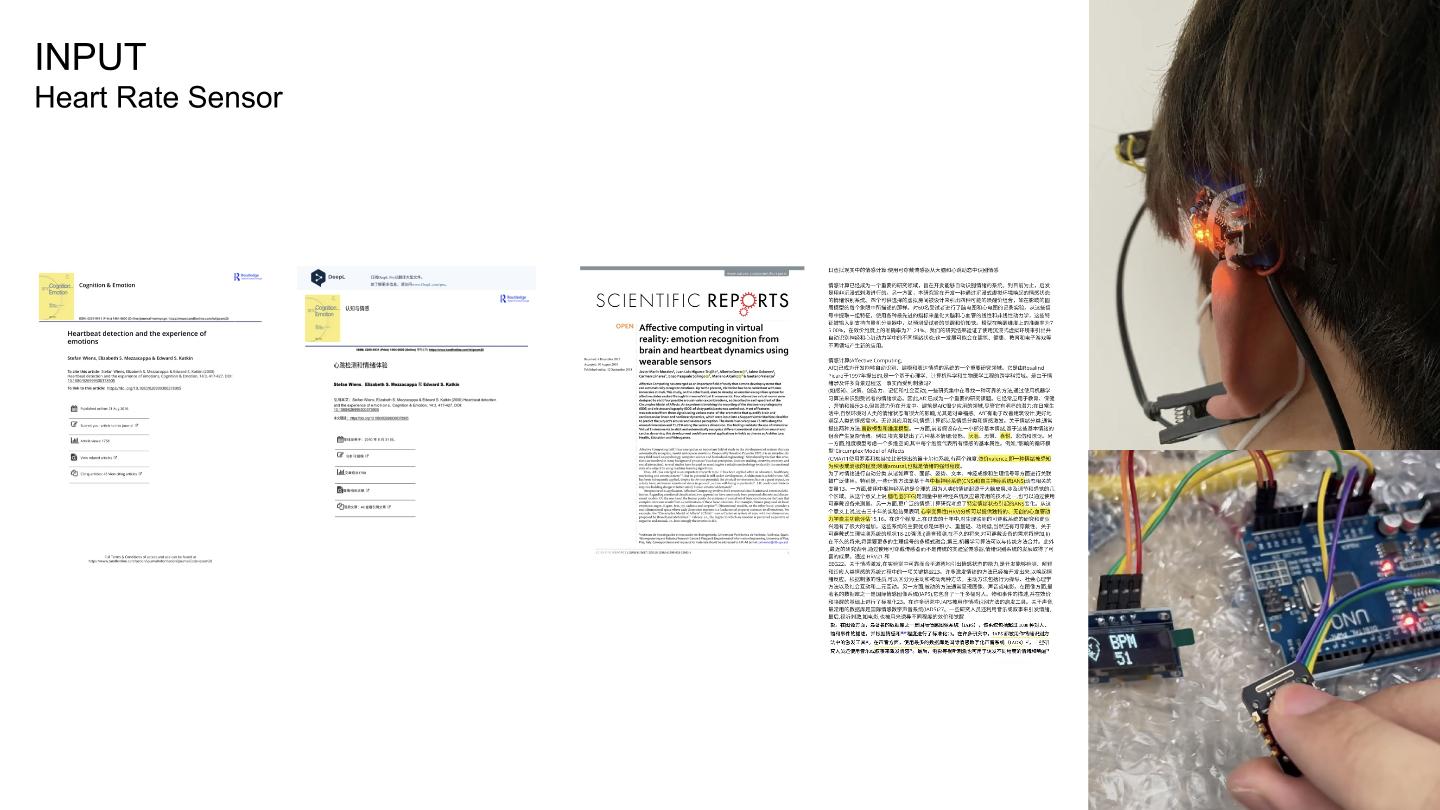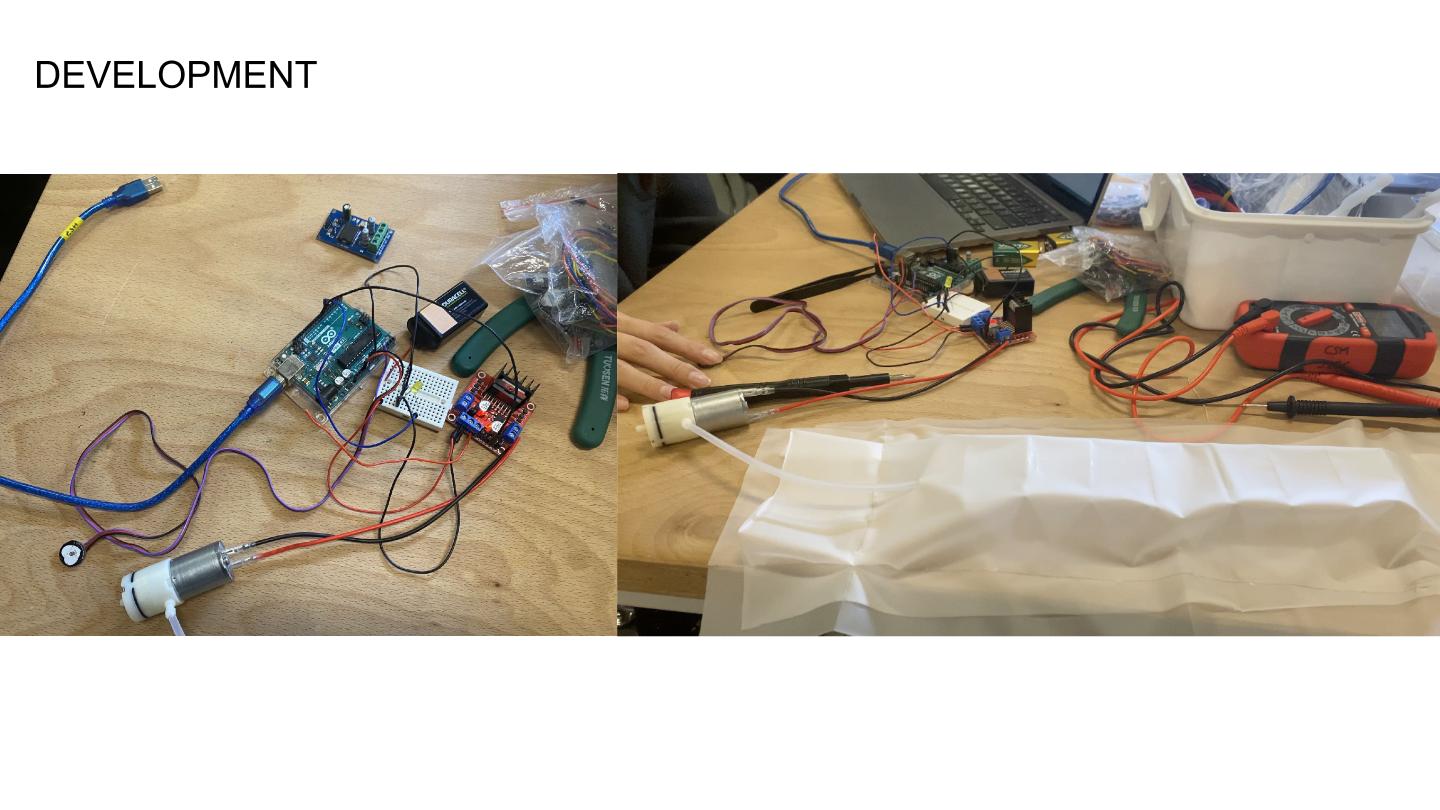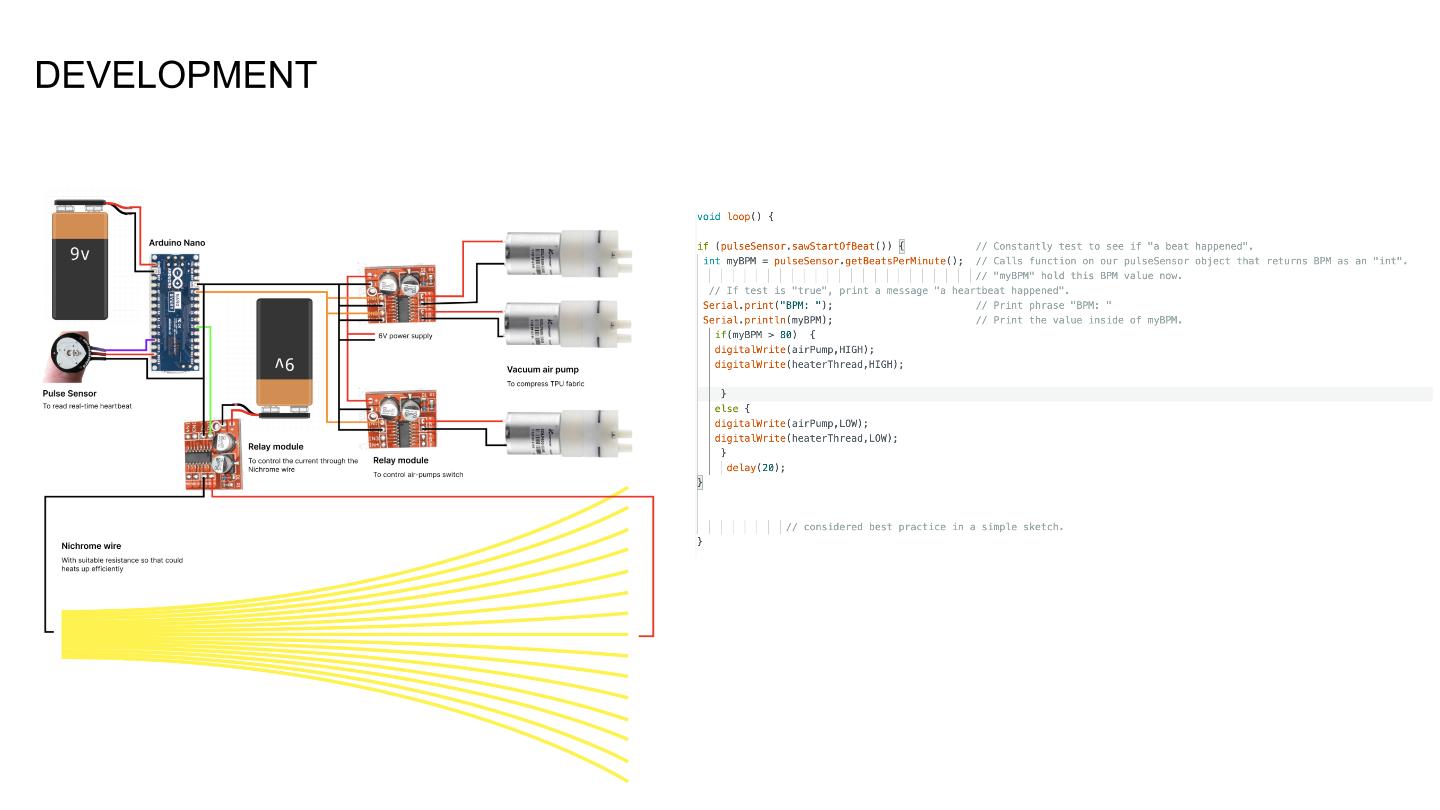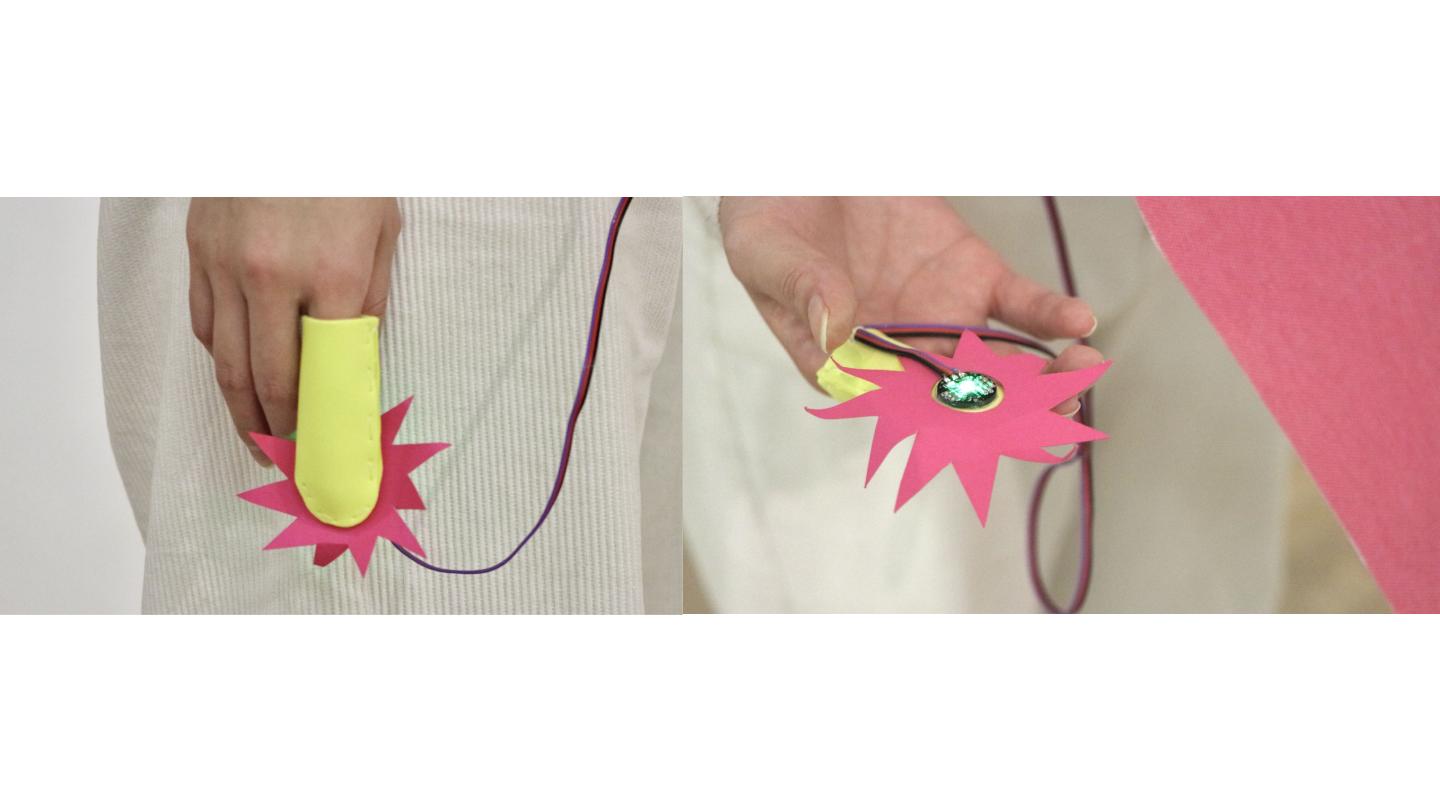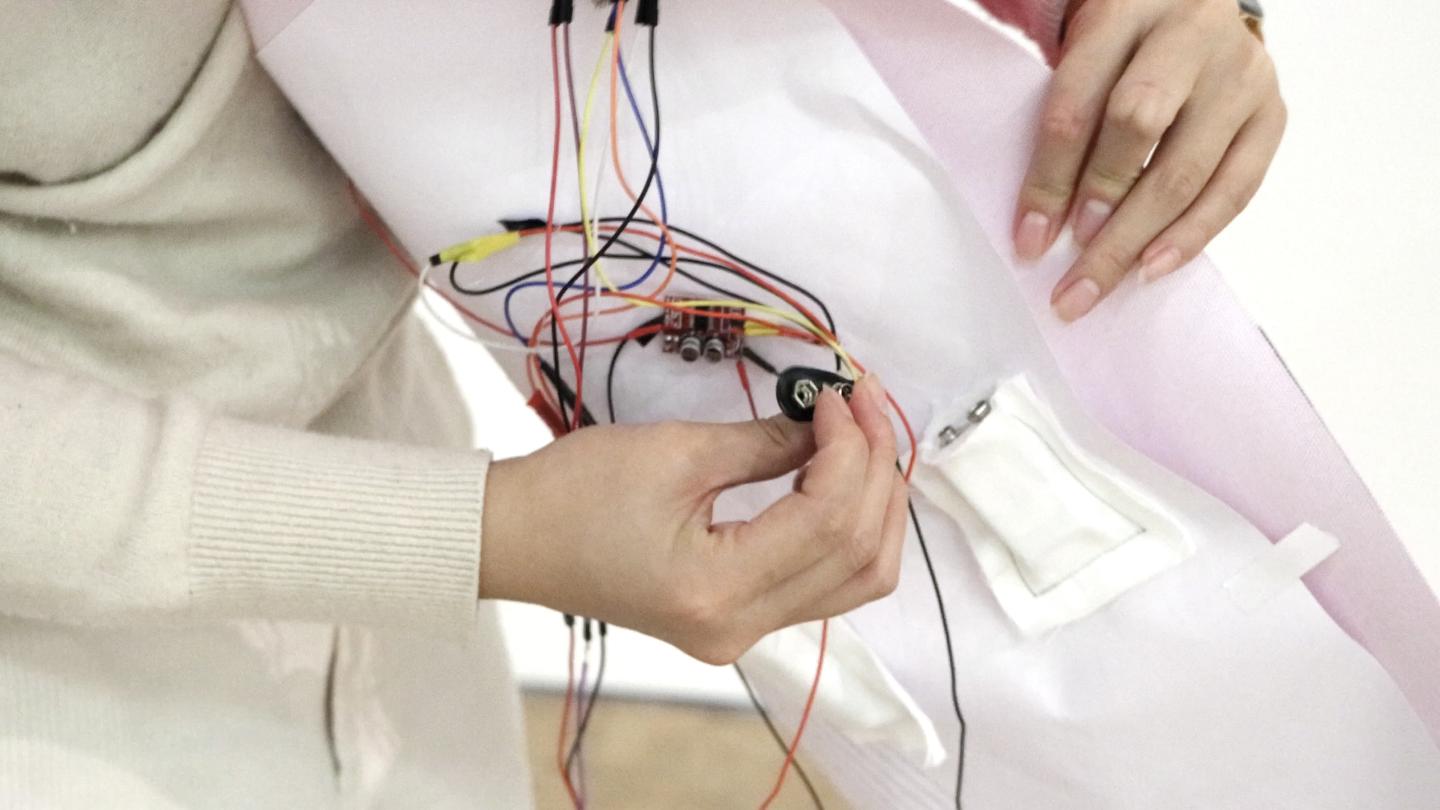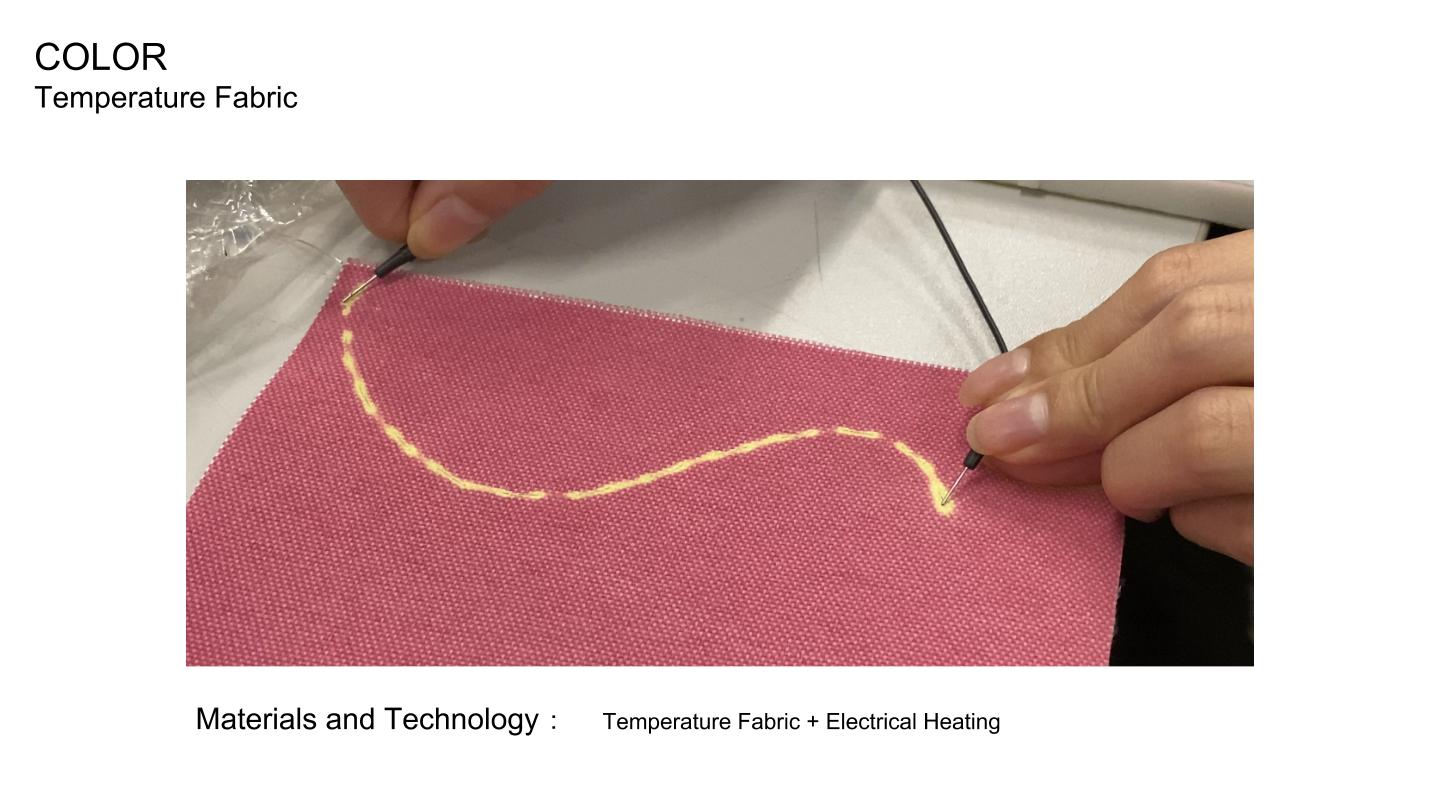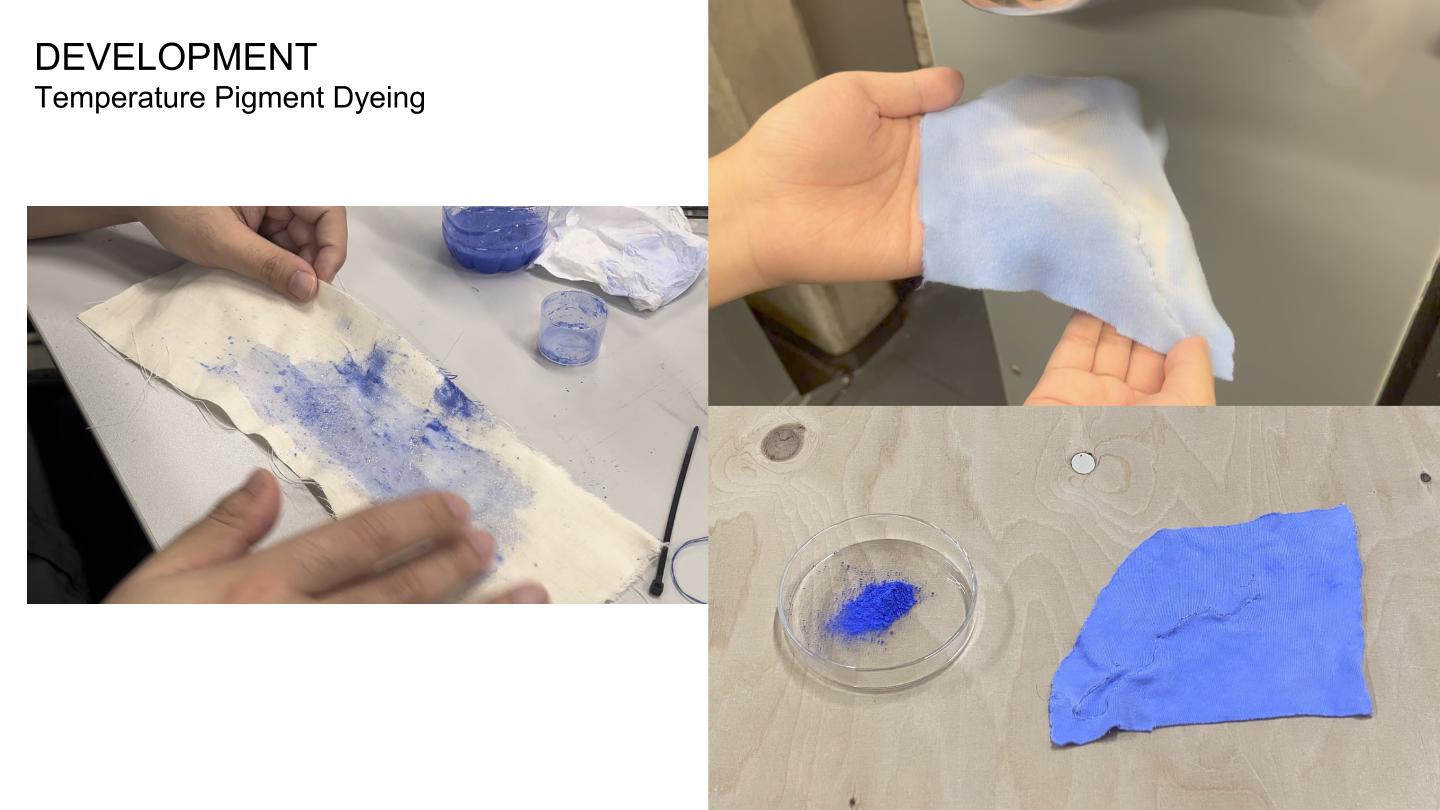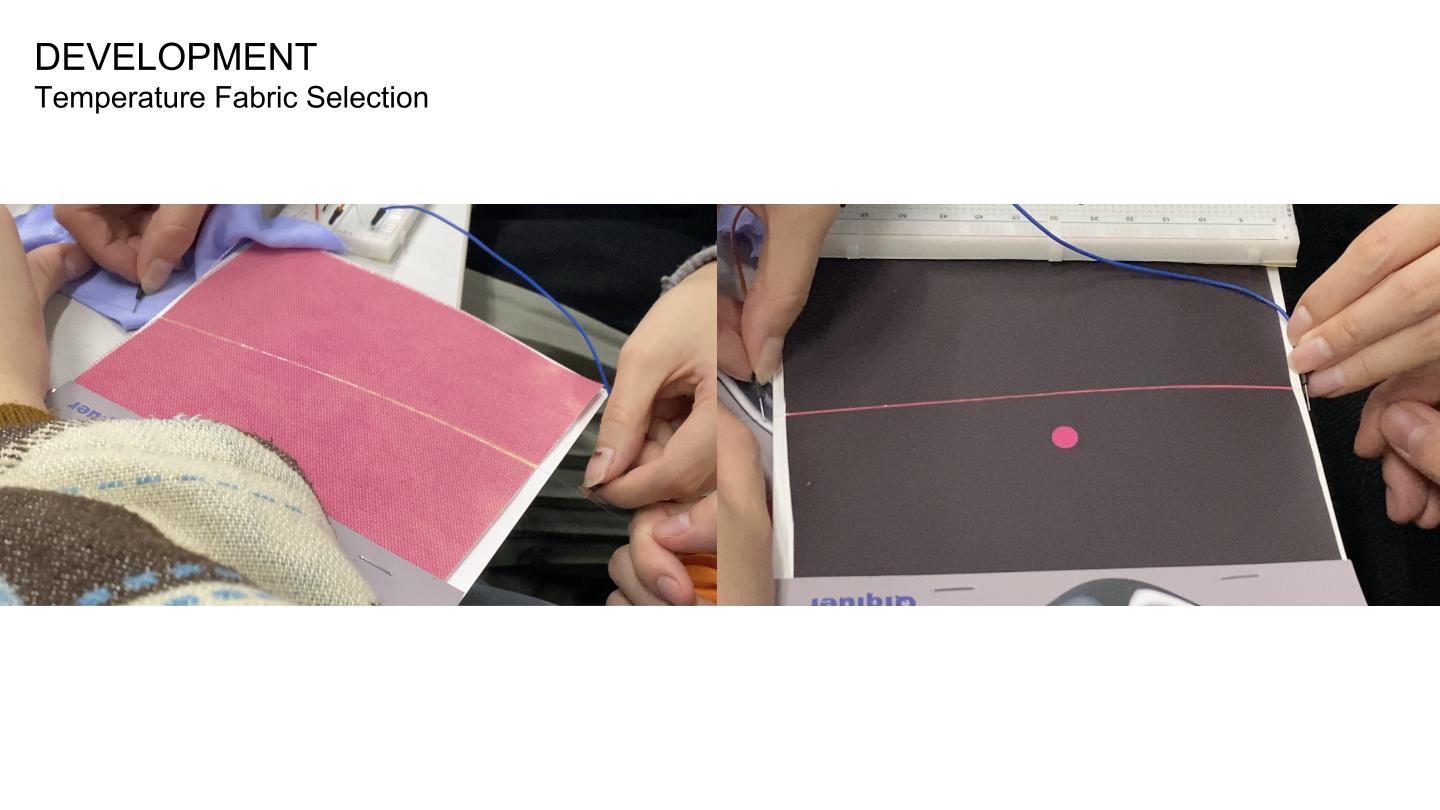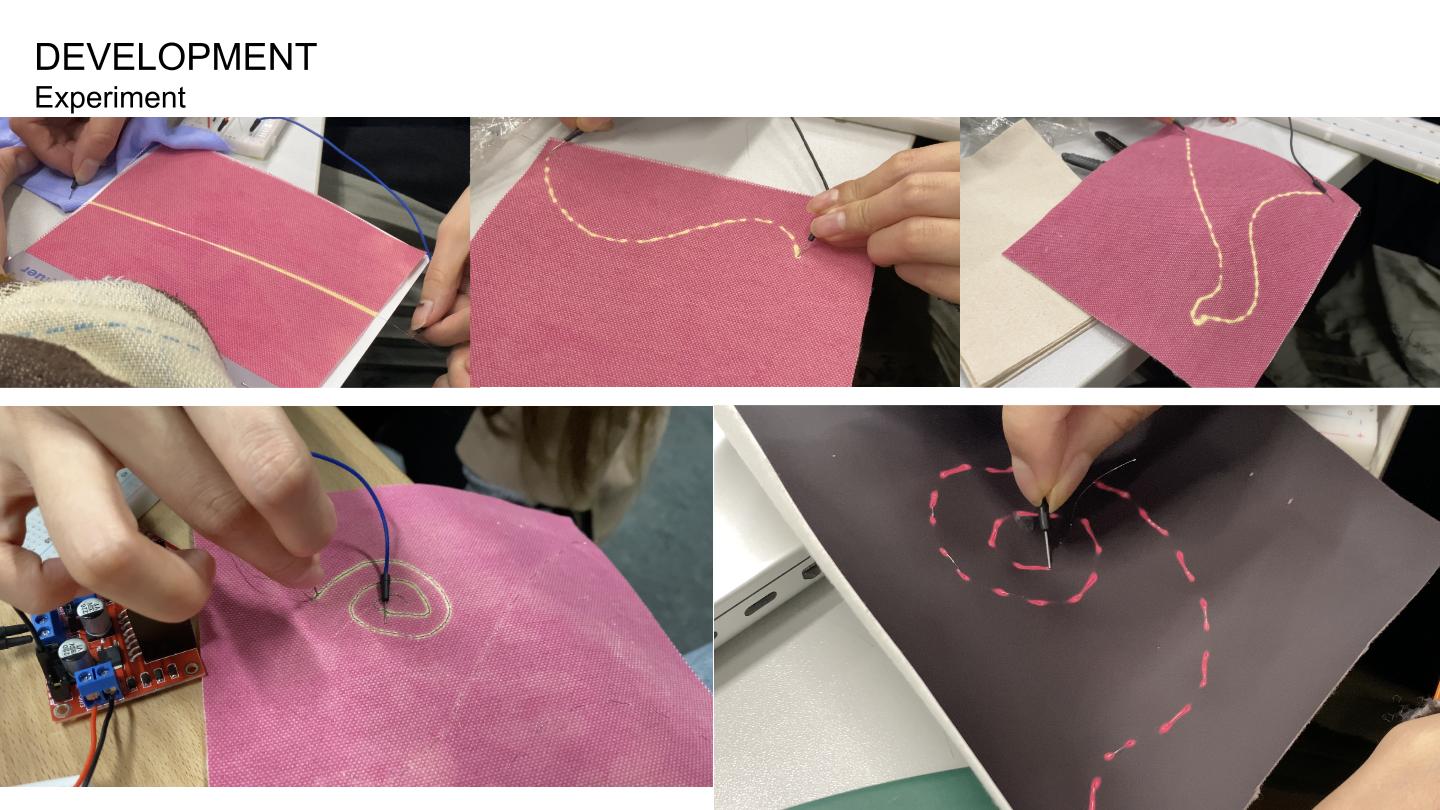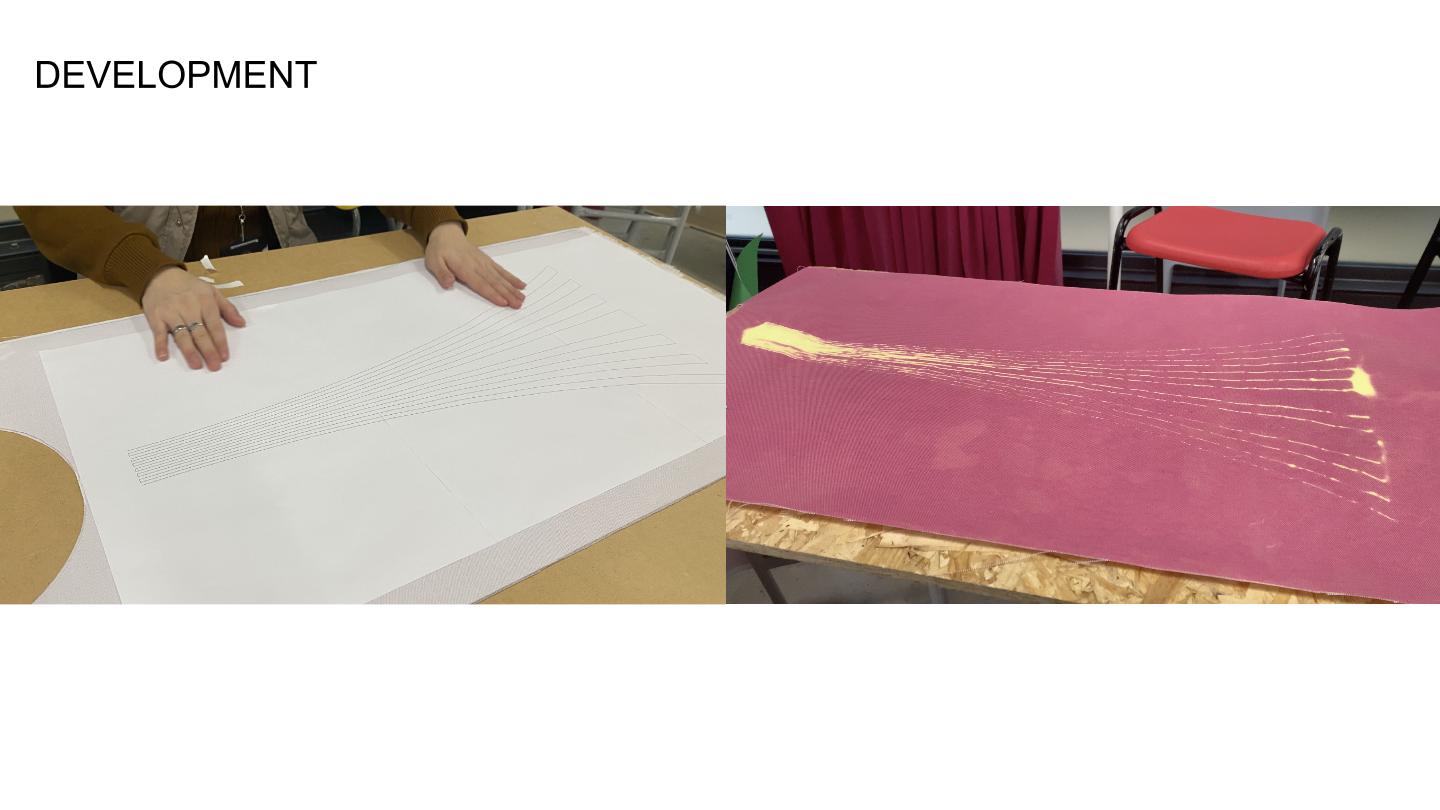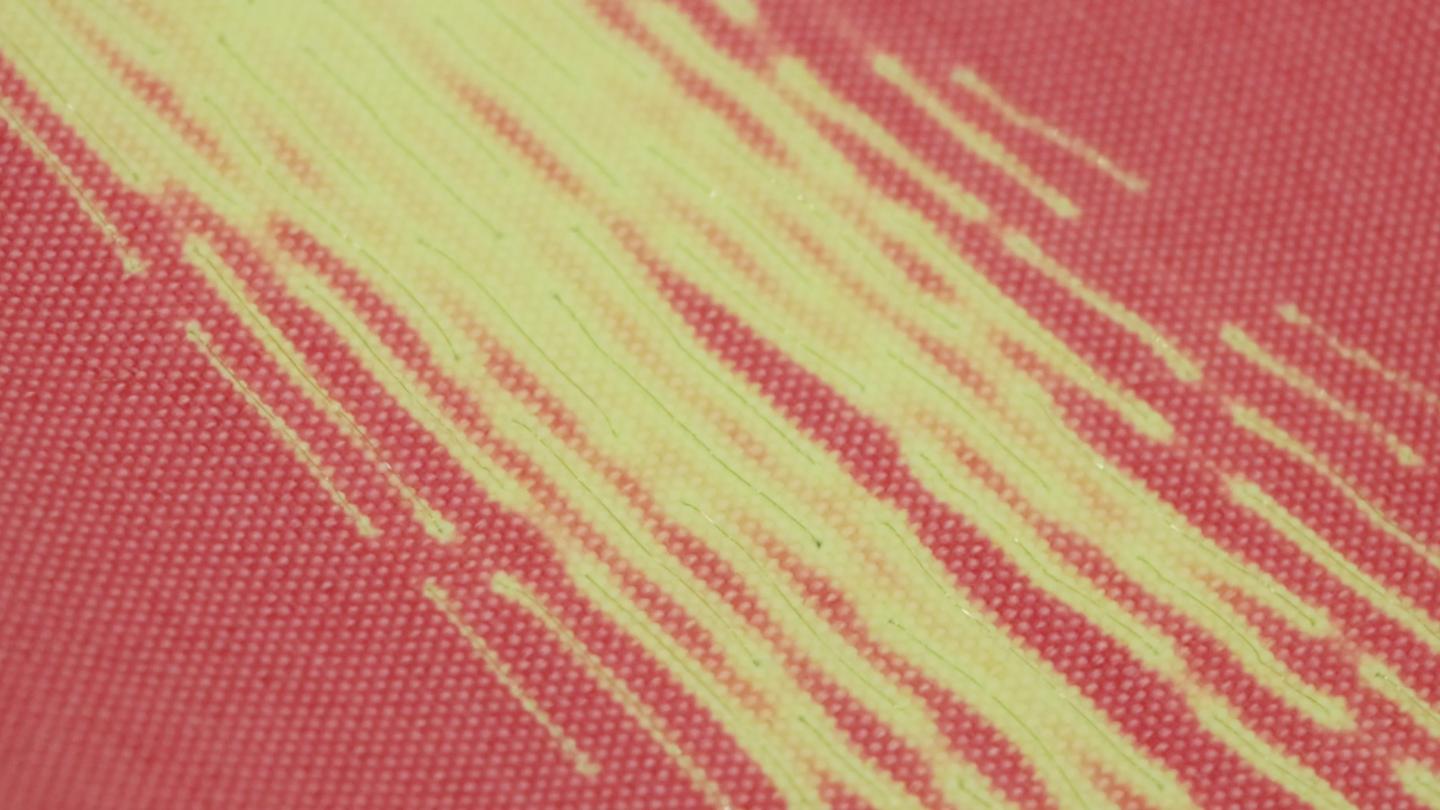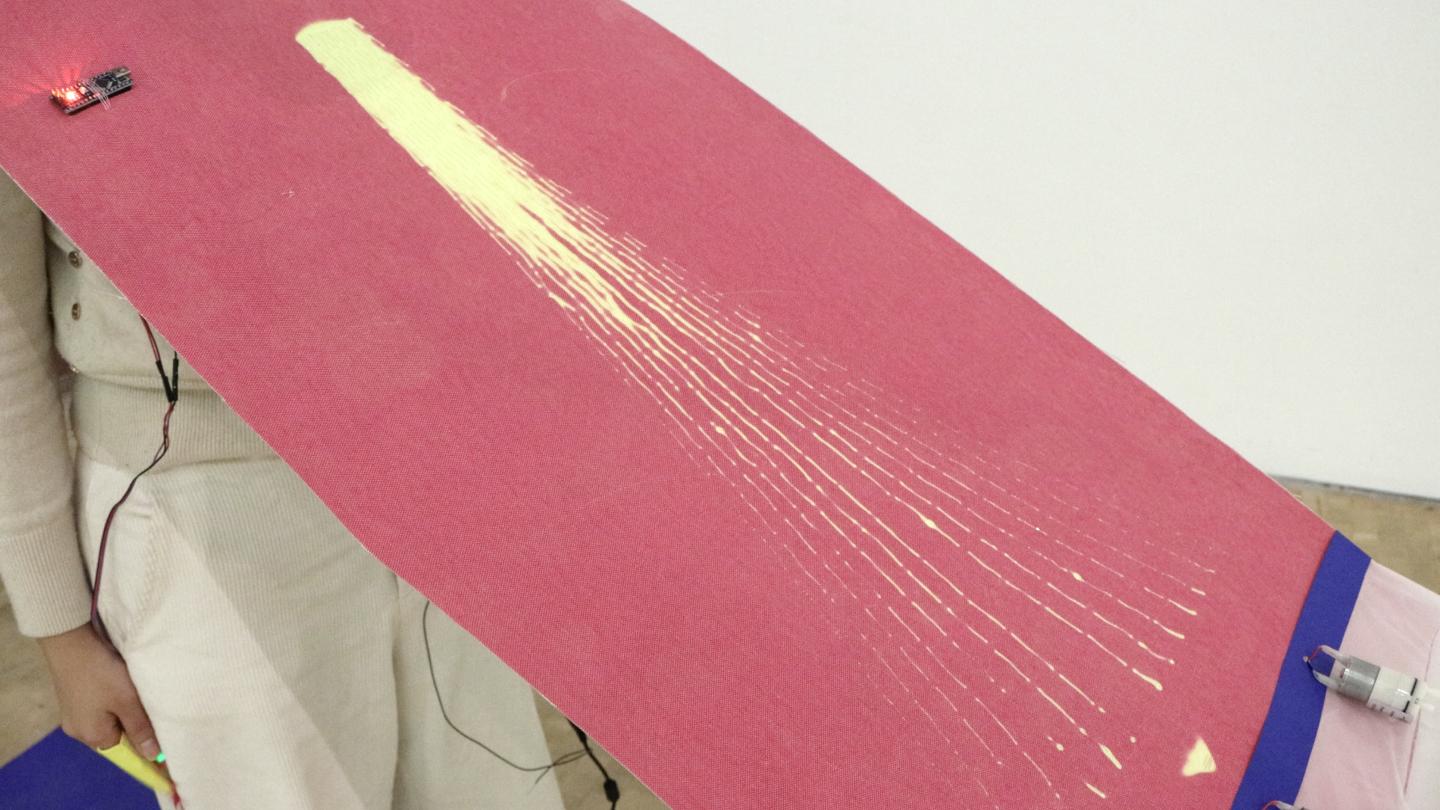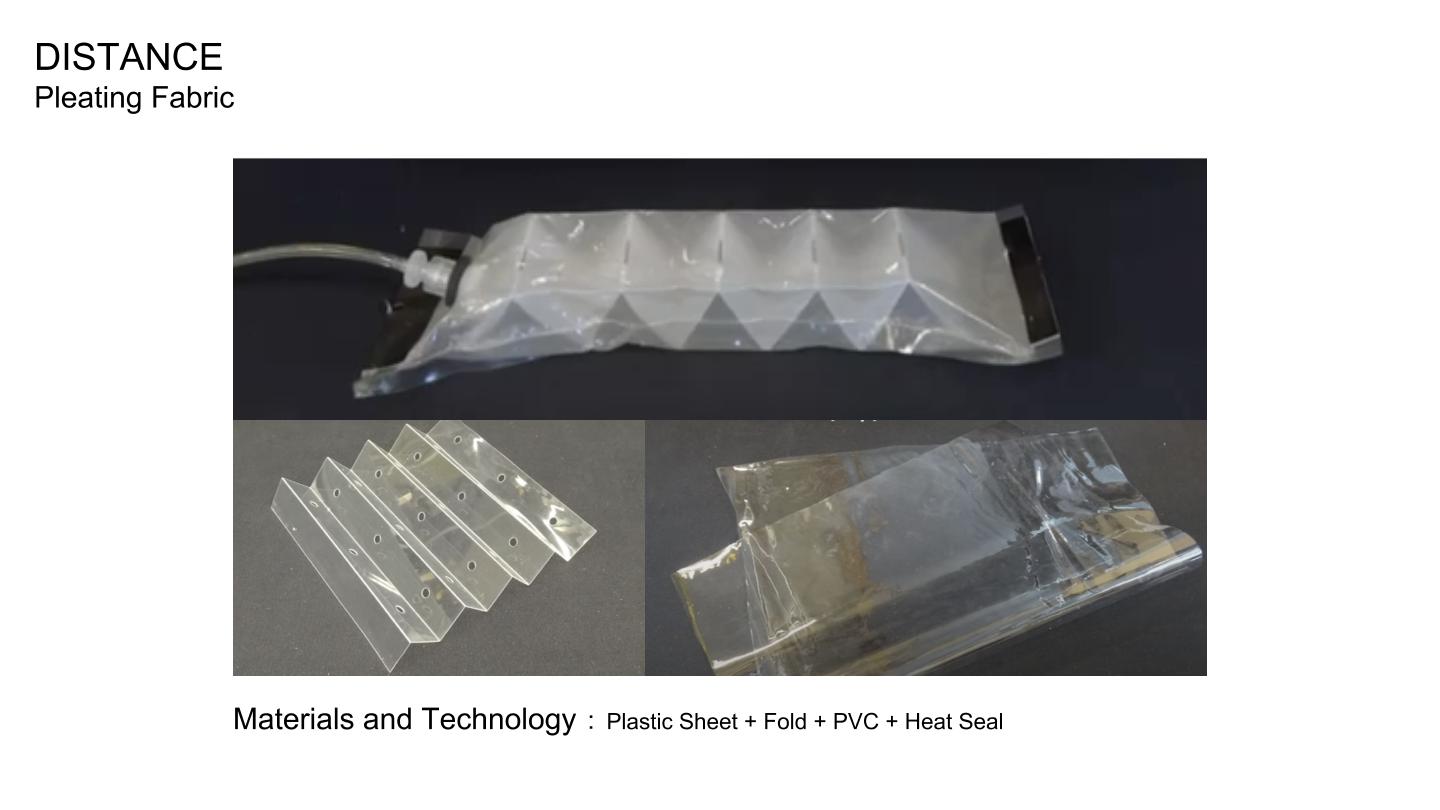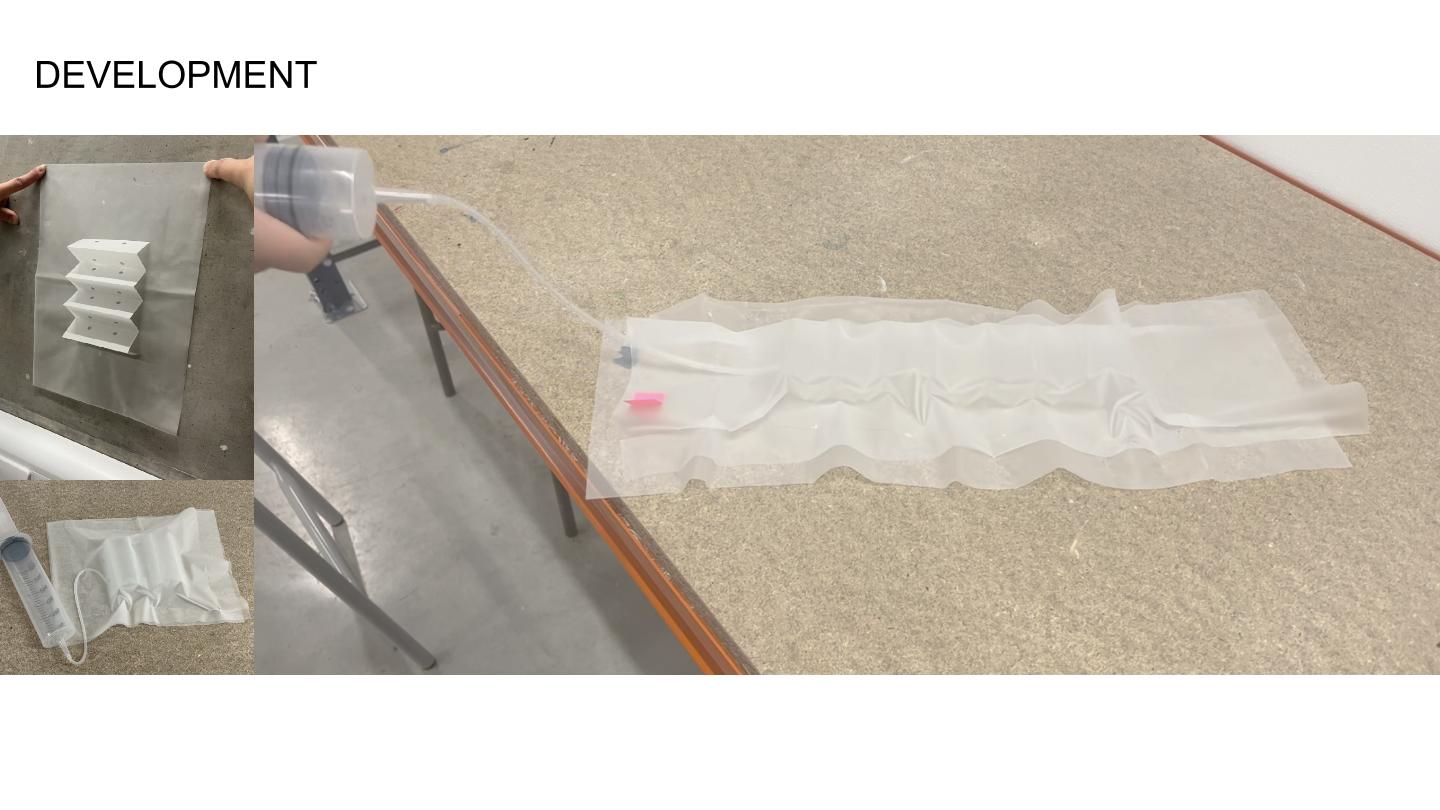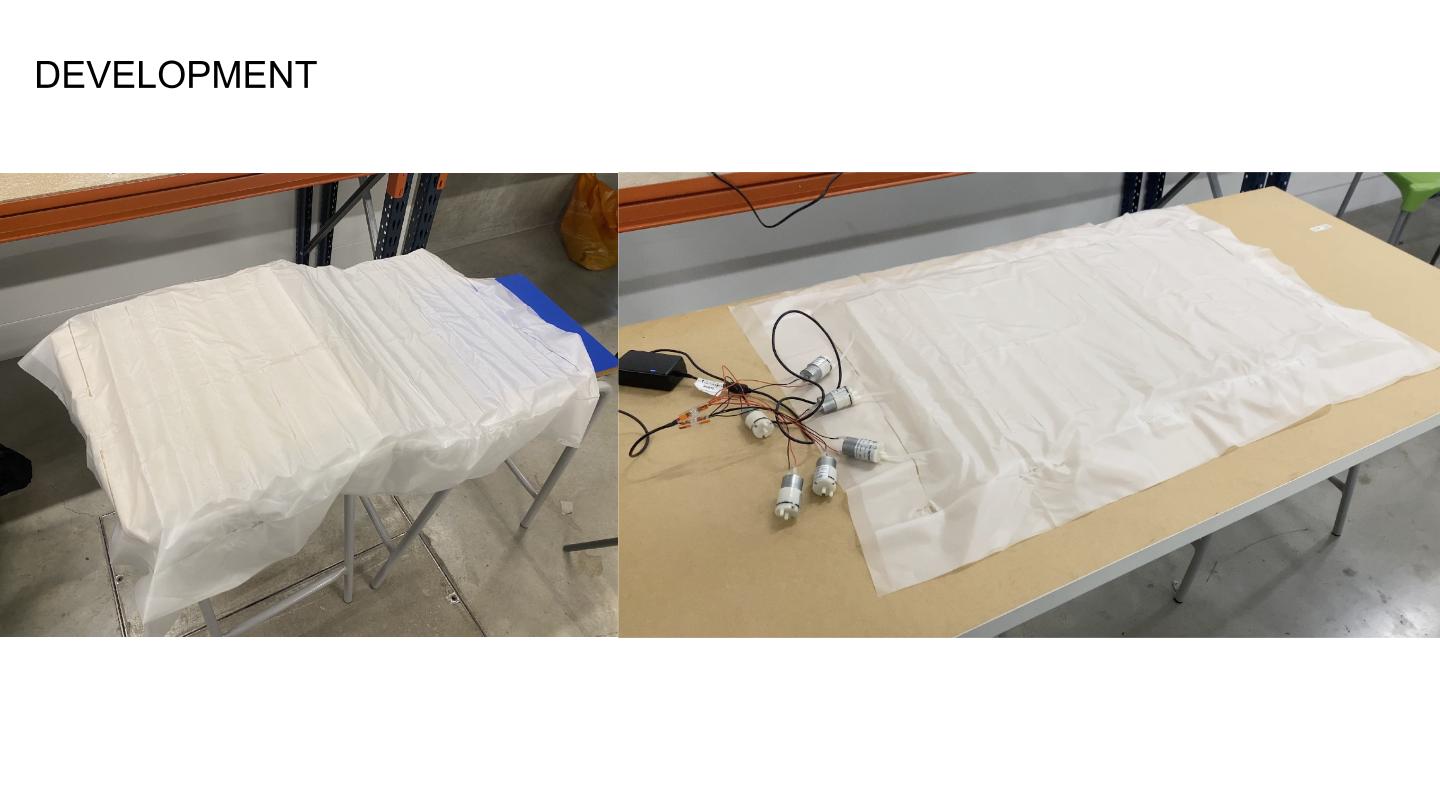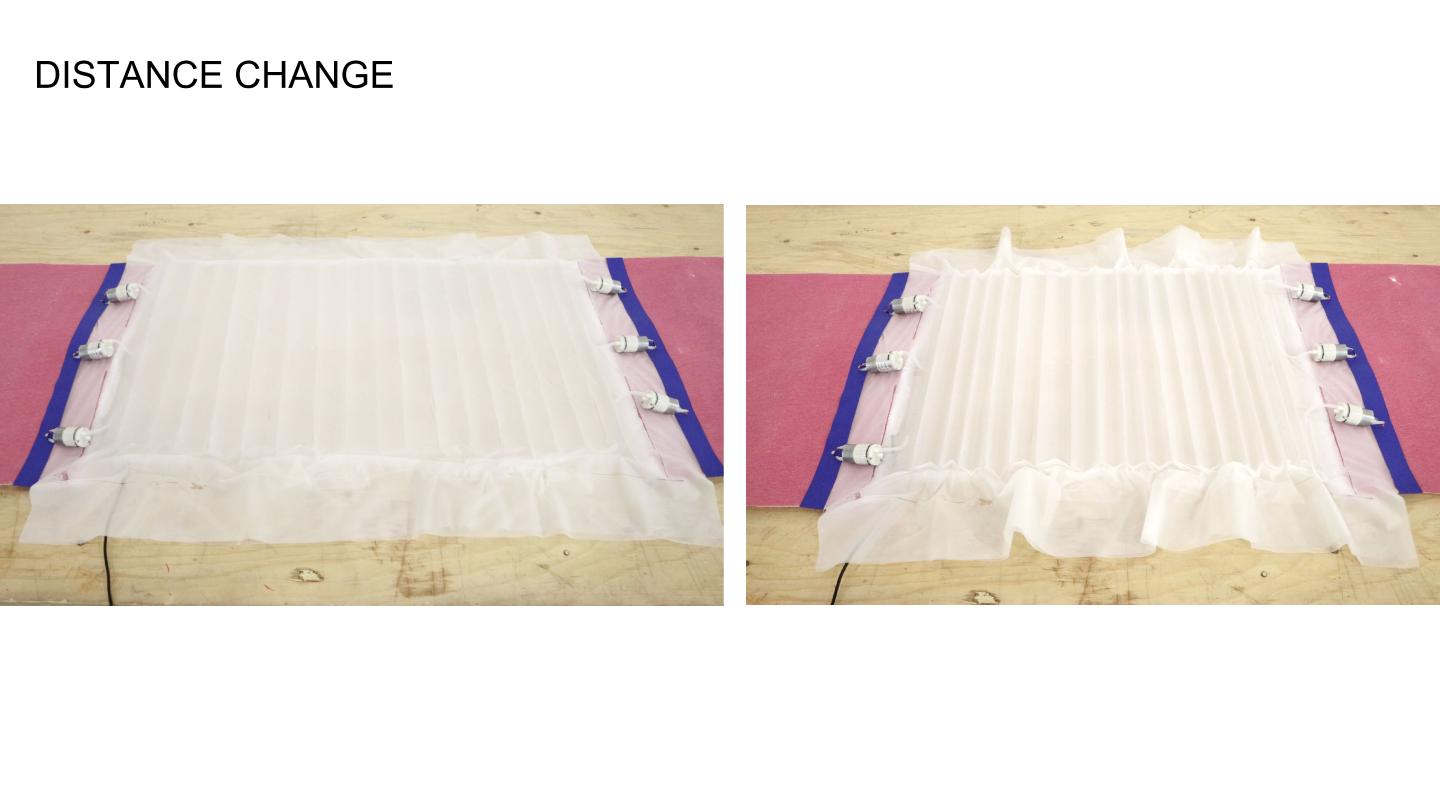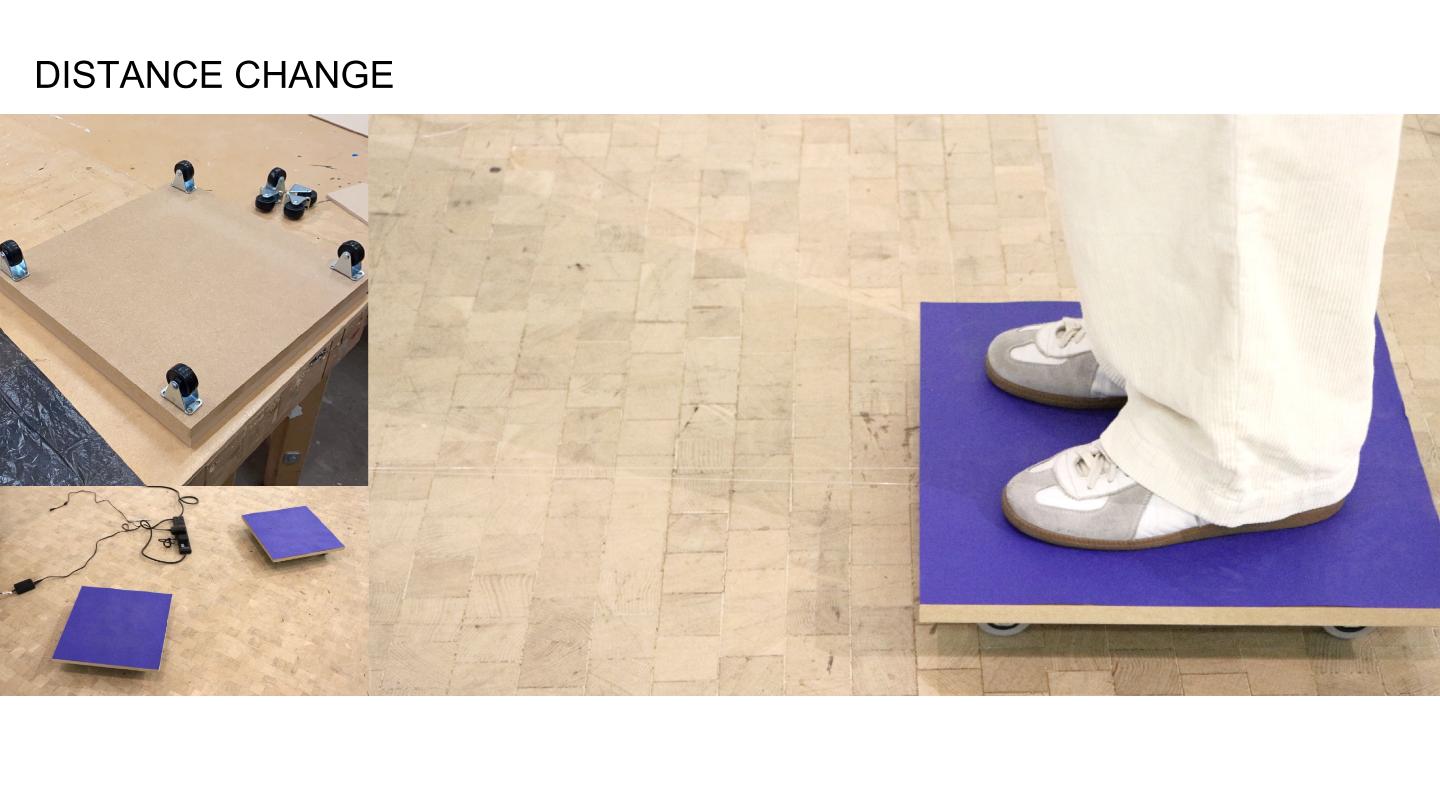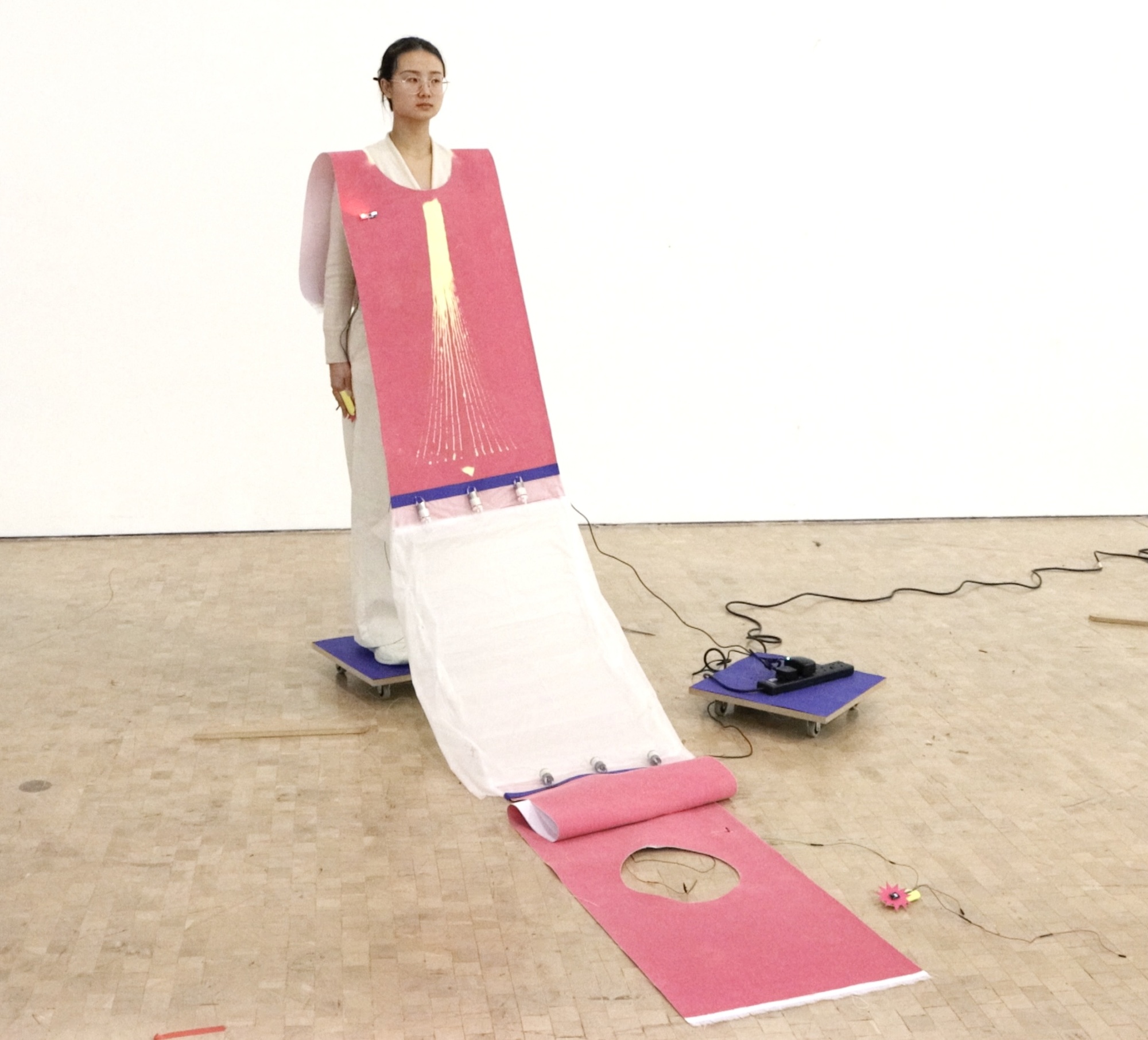
Overall display
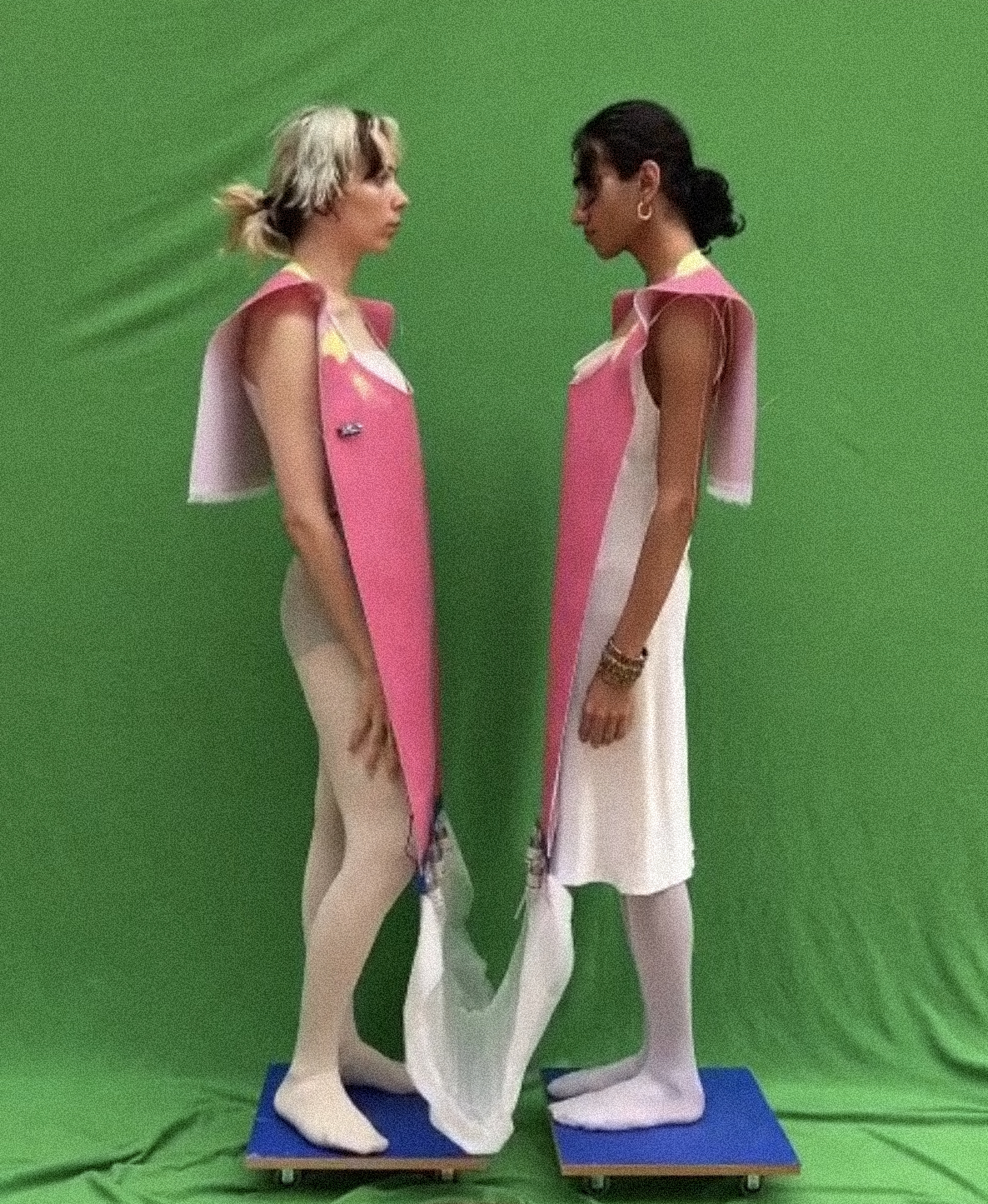
overall structure
TAKE ME OUT

Temperature effect
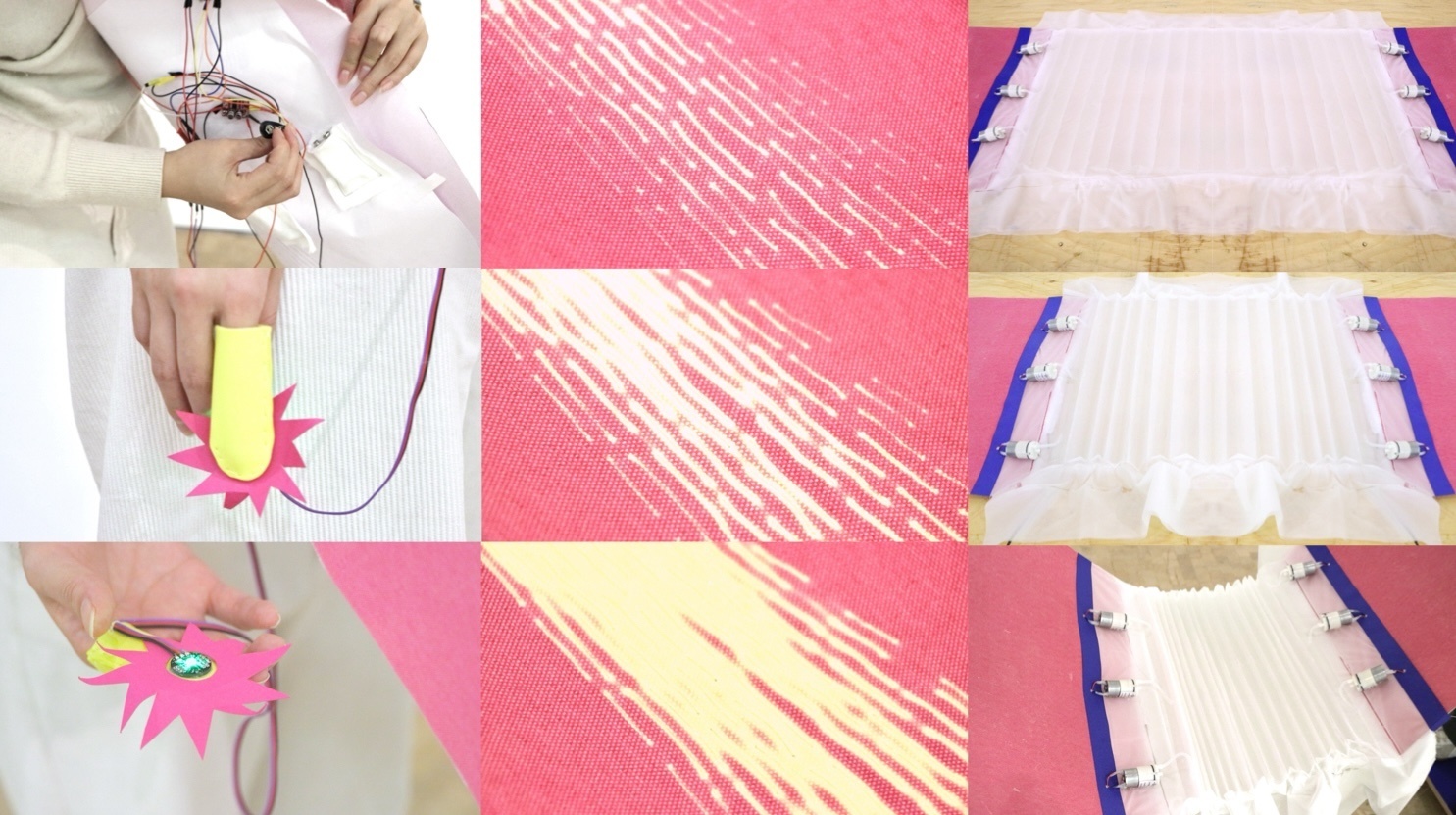
brief 4-10.001

experimental process
111
This project is set against the backdrop of Chinese dating culture and explores the subtle psychological and emotional dynamics of strangers when they meet. Through behavior, device and material experiments, the work presents the process of individuals from unfamiliar to close. The fluctuation of heartbeat is not only a physiological signal, but also a trigger to connect each other, affecting space, distance and perception. The color change and morphological transformation of the fabric symbolize the flow of emotion, and the psychological experience of acquaintance, attraction and gradual approach. The work takes this opportunity to think about the mechanism of "intimate relationship" given by society, as well as the initiative and passivity of individuals in it. It is not only a reproduction of the traditional dating model, but also a reflection on how emotions are measured and intervened by technology, and explores the way of connection between people between precision and chance.
This project explores the nuances of psychological and emotional dynamics in the context of China's matchmaking culture. Through performance, installation, and material experimentation, it captures the process of moving from unfamiliarity to closeness. Heartbeat fluctuations, beyond being mere physiological signals, become triggers that shape space, distance, and perception. The shifting colors and transformations of the fabric symbolize the fluidity of emotions, metaphorically representing the experience of meeting, attraction, and gradual approach. The work reflects on the social mechanisms that define intimacy and the balance between agency and passivity within them. More than a reenactment of traditional matchmaking rituals, it questions how emotions are measured, mediated by technology, and navigated between precision and chance, ultimately exploring new ways of human connection.
This design experiment focuses on the phenomenon of marriage and love matching mechanism in contemporary Chinese society-blind date-to carry out critical thinking. Under the background of the common blind date behavior, there are great differences in the acceptance of different generations. This project digs into the core of the blind date dispute: when the two sides go on a blind date, they often exchange "index" objective conditions such as age, occupation and income first, and then start to get along with each other after reaching the standard, but ignore the key element of interpersonal communication-emotion. When quantitative indicators replace emotional resonance as the entry condition for intimate relationships, the stylized dating process exposes the dislocation of the emotional system and the material system.
Based on this, we reimagined and designed the matchmaking process. The traditional dating scene is reconstructed by wearable device, and a new emotional interaction interface is constructed with soft fabric as the medium. The heart rate sensor is used to collect people's "heart signals" in the process of communication, and these signals are cleverly converted into the tightening action of the cloth, and the link pattern is displayed at the same time. In this way, the emotional reactions that are difficult to capture are visualized intuitively and novel, so that the two blind dates can perceive each other's heartbeat moments in real time. This behavior improvement design is adopted to break the limitation of purely measuring by objective conditions, and through transforming the unquantifiable biological signals into perceptible material interactions, the social experiment of emotional capital visualization is attempted to inject new vitality into the traditional social activity of blind date, make the blind date return to the essence of emotional communication.
This design experiment critically examines the institutionalized nature of matchmaking in contemporary Chinese society-blind dating. While blind dating is widespread, different generations have vastly different attitudes toward it. This project delves into the core controversy: participants often begin by exchanging "measurable" factors such as age, profession, and income. If these criteria match, they proceed to interact, yet emotional connection-the essence of human relationships-is often overlooked. When quantifiable metrics replace emotional resonance as the entry requirement for intimacy, the standardized dating process exposes a disconnect between emotional and material systems.
We are research students at Central Saint Martins, University of the Arts London.
We like the influence of innovation, experimentation and interdisciplinary ideas, and are good at breaking design boundaries and seeking creative expression through the integration of multidisciplinary knowledge. Our research covers the areas of product form design, user experience research, material innovation and sustainable design strategies. We pay attention to the complex interpersonal relationship behind the surface behavior of people, and think that design should go deep into the deep interaction between people and the environment. Through the study of this field, we are committed to creating works with more humanistic care and social and emotional connections.
In this project, we focus on the research and application of intelligent responsive fabrics. The fabric can change the external structure according to the human physiological signal, and assist the emotional communication in the social scene.







